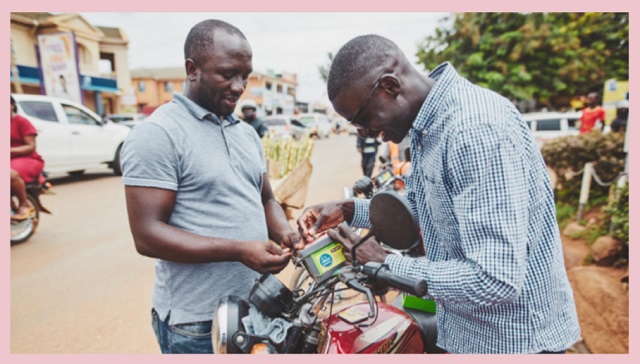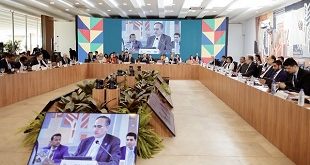
Bainomugisha told The Independent that lack of air quality data in African cities limits awareness of the scale of the problem and hampers authorities from taking informed decisions, meaning that individuals and governments have minimal awareness of the scale of pollution levels and what actions can be taken to mitigate it.
“The first step to be able to improve air quality is to be able to measure it, know what the current air pollution levels are, its causes and importantly its consequences to our health and the environment,” Bainomugisha said.
Bainomugisha told The Independent that when they conceived the idea to test air quality in Kampala four years ago, they did not realize how important air pollution would become. Bainomugisha says lack of data on air quality has bigger implications.
“If we don’t know where the hotspots of air pollution are, what causes it and when the air is most polluted, then we cannot address the problem,” he said, “We are working with communities, schools, boda-boda riders and gas stations to address the issue of air quality.”
Paul Green, the technical project manager at AirQo says Kampala has always had an air pollution problem but until recently no one could say how bad the problem was. He told The Independent that although the U.S Embassy in Kampala has done a great job so far in providing up-to-the minute data, the challenge is that its monitor has been stationed in one place and records data once an hour.
“We wanted to get access to much more data across the city but at a low cost and that is the key thing because the US Embassy sensor costs thousands of dollars and is not affordable for the government, KCCA or the National Environment Management Authority (NEMA),” he said.
“Our aim moving forward, thanks to funding from Google, is to use artificial intelligence and laboratory technology to try and make a map to help us predict what goes on between the sensors.”
“Right now, we are gathering data and looking at the trends. If we had data coming from hospitals and if we, for instance, have a number of cases for cough and it is coming from a particular region, we can easily map that with our pollution data base,” added Ssematimba.
“So we are able to make a few adjustments and we can get accuracy across the city. We want to continue our coverage even if we now have a year’s worth of data at least for most parts of Kampala and other parts of the country.”
Green said they now want to build partnerships with other organizations so the data can help in planning and better decision making.
“We want to share this data with private individuals so that if it is predicted that it is gonna be a high-pollution day tomorrow, then someone will cancel their picnic or will have the party indoors or change the route to the workplace because they know that if they walk away from the main road, it makes a big difference,” he said.
“We want to look at vehicle emissions, cooking methods (firewood and charcoal), burning rubbish, paving roads because the road dust contributes a lot. These are some of the kind of decisions that government can’t take until they have evidence, Green said.
KCCA’s solutions
Eng. Andrew Kitaka, the executive director of Kampala Capital City Authority who attended the research initiative’s launch also noted that a preliminary air quality baseline assessment conducted by the city authority recently shows that particulate matter in Kampala is five times higher than the World Health Organization guidelines.
Kitaka said Kampala’s poor air quality is not only imposing a health burden on the residents but is also making the city unattractive for visitors and investment , stalling the city’s vision of being vibrant, attractive and sustainable.
Going forward, Kitaka says, KCCA is taking a number of measures to address the problem among which includes paving of roads to reduce dust.
“The biggest component of pollutants in the city is dust,” Kitaka says,“In fact; only 30% of Kampala’s road network of 2110km is paved; the more paving we will do, the better the air quality will get.”
“We are also creating walkways to encourage walking and making them safe by putting street lights,” Kitaka said, adding that he hopes all the new measures will improve the environment for walking and therefore have less people moving on boda-boda and vehicles.
Kitaka said air quality will be a key metric in KCCA’s new strategic plan which starts this July this year until 2025. He said the Authority also wants to introduce mass transport using the BRT and light railway to reduce on fossil fuel consumption.
KCCA is also continuing to green the city and enforcing building standards, Kitaka said, adding that the Authority is also in the final stages of enacting the green infrastructure ordinance to regulate the planting and cutting of trees.
“National level policies, research, technology and financing will go a long way in fighting air pollution,” Kitaka said, adding that policies such as vehicle emissions should be part of the recently passed mandatory vehicle inspection.
He also suggests that the Ministry of Energy should work on reducing the electricity tariffs to enable households switch from the poor energy options they currently use such as firewood and charcoal to electricity.
****
 The Independent Uganda: You get the Truth we Pay the Price
The Independent Uganda: You get the Truth we Pay the Price




First you say, ““The worst time to jog in Kampala is in the morning hours while afternoon hours are the best,” Prof. Engineer Bainomugisha, the Principal Investigator at AirQo told The Independent recently.”
Then immediately afterwards, ““By 3pm, most areas have moderate air quality or unhealthy air quality for sensitive groups such as those who are asthmatic,” said Prof. Bainomugisha on Feb.26, “At around 8PM, Kampala’s air registers red (unhealthy) and orange (unhealthy for sensitive groups) in some instances but it can turn purple (very unhealthy).””
What is wrong with you people?